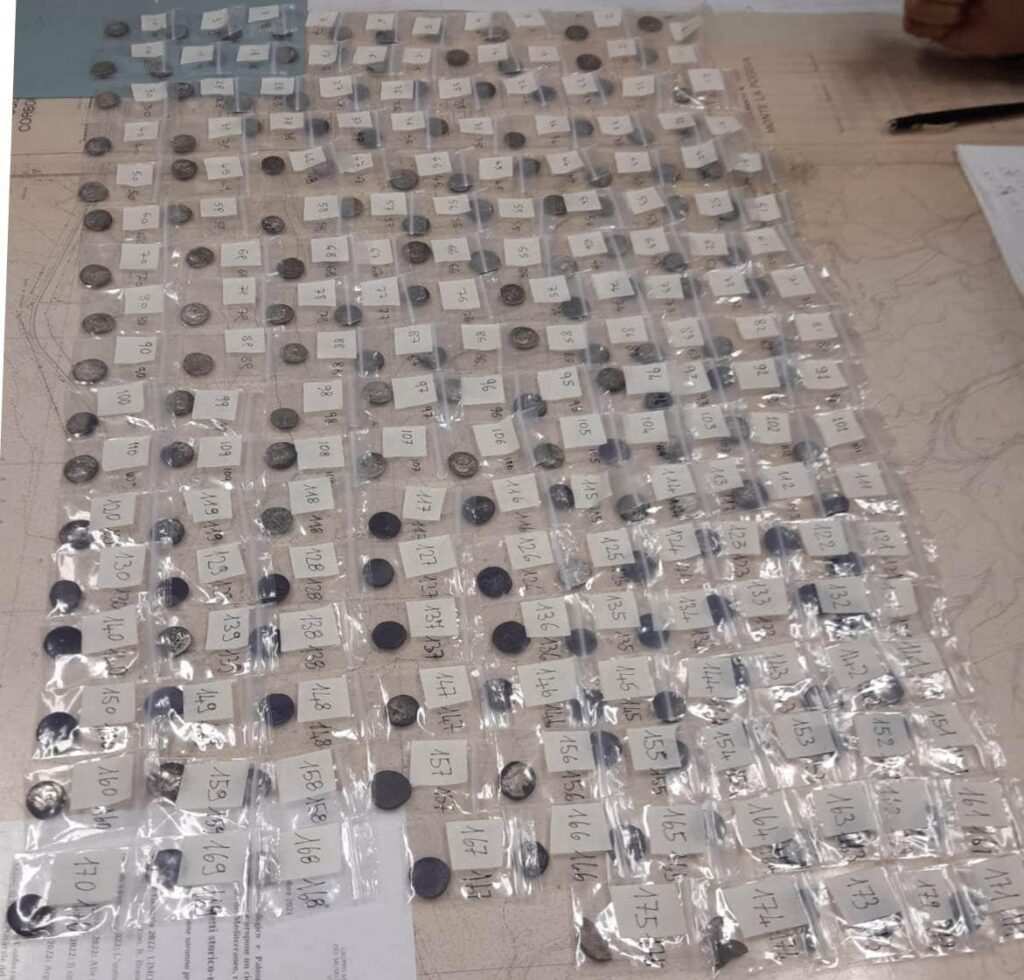A soldier glances around before stooping down in the woods and digging. He carefully sets his valuables into the dirt hole and covers them up. Methodically, he memorizes the location by a nearby landmark.
Or perhaps the scene looked a little different.
A frazzled merchant hurries into the forest and drops to his knees. Flinching at every sound, he buries his treasures as quickly as possible. Jumping to his feet, he casts one last glance at the disturbed ground and runs.

Either way, one thing is certain. Whoever buried their treasure never returned.
A volunteer went for a hike through the newly cleared part of a forest in Livorno, Italy, in November 2021. Walking down the slope, they noticed a shiny glint among the leaves, according to an April 14 news release from the Superintendence of Archaeology, Fine Arts and Landscape for the provinces of Pisa and Livorno shared by the Livornese Paleontological Archaeological Group.
Looking closer, the hiker realized they’d stumbled upon some ancient-looking coins. Local archaeological authorities were called to investigate.
Archaeologists excavated the area and unearthed 175 ancient Roman coins. The silver coins date back over 2,000 years, Il Tirreno, an Italian outlet reported. Photos show the small, worn silver discs.
Most of the coins were found grouped together with fragments of a container, the outlet reported. A few coins were found scattered in the area. No other artifacts were uncovered.
“The coins have definitely been hidden,” Lorella Alderighi, the archaeologist who investigated the find, told LiveScience. “They constituted a ‘treasure’ or piggy bank. The easiest way to hide valuables was to bury them underground, away from homes where no one could find them.”
The oldest coins were from about 157 B.C., with the newest from 82 B.C., the Hungarian Numismatic Society said in a Facebook post.
The newest coins correspond with “a very turbulent historical period” for the ancient Roman empire, Alderighi told LiveScience. The empire was in the middle of its first large-scale civil war.
“These coins may have been the savings of a soldier returning home [during] military service,” Alderighi said.
Alternatively, the coins could have been hidden by a wealthy merchant, another historian told LiveScience.
The treasure trove remained hidden for 2,000 years, the release said. The silver finds will soon be on display at the Museum of Natural History of the Mediterranean in the Province of Livorno, Il Terrino reported.
Livorno is about 200 miles northwest of Rome along the coast of the Mediterranean Sea.
___
© 2023 The Charlotte Observer
Distributed by Tribune Content Agency, LLC.



